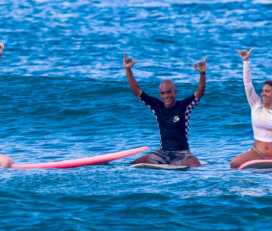Jamal S.
1 Reviews
Among the tropical fish, sharks and coral in the Maldives’s …
Among the tropical fish, sharks and coral in the Maldives’s Indian Ocean live billions of micro-organisms, including dinoflagellates, which are a type of phytoplankton. But what differentiates the Lingulodinium polyedrum from other organisms is their unique ability to generate light. Stress, caused by the movement of the sea and waves, leads the plankton to emit light, or bioluminescence, as a defence mechanism in a similar way to some fireflies. The bioluminescent light has an electric, blue-neon colour, radiating further as each wave breaks. The speculator phenomena is one of nature’s rarest events. It’s so remarkable, Hollywood decided to feature the Sea of Stars in Ang Lee’s award-winning Life of Pi (2012) to illuminate the sea for the lost protagonist.
The Sea of Stars in the Maldives depends on several factors, including the year’s climate and the growth of the bioluminescent plankton. Nobody can predict when and where the event will occur. Vaadhoo Island in the Raa Atoll is the most well-known spot. But, it can also be viewed on one of the 1,200 other islands in the Maldives in the right conditions too. According to locals, the spectacular event is more prevalent from late summer to the end of the year. But, these are just personal accounts. The exact time and location are likely to vary for different islands.
As nature is unpredictable, nothing is for sure. Planning a once-in-a-lifetime trip to the world’s most beautiful islands in the hope of experiencing the Sea of Stars might not be a wise decision. Nature does as nature pleases and an element of luck helps. Plan a holiday to the Maldives for the luxury, beaches, snorkelling and diving. Seeing the Sea of Stars should be a bonus, not a given. – via ![]()













